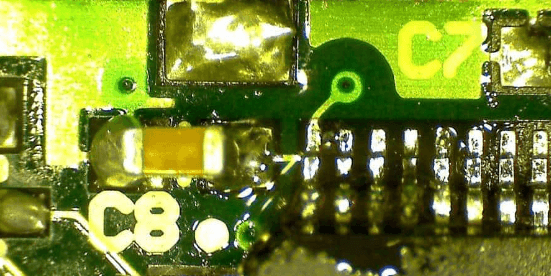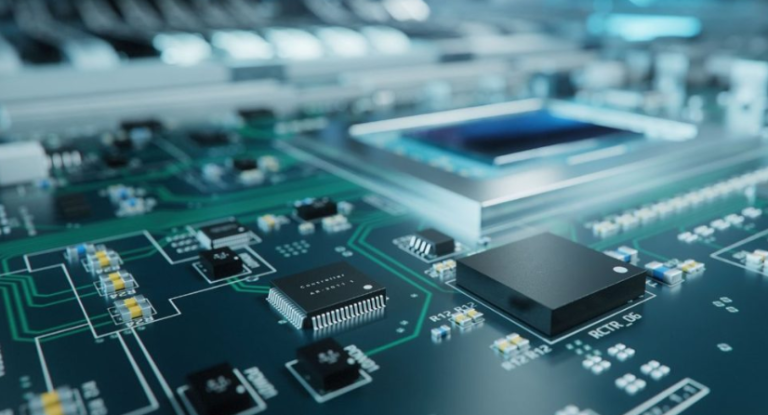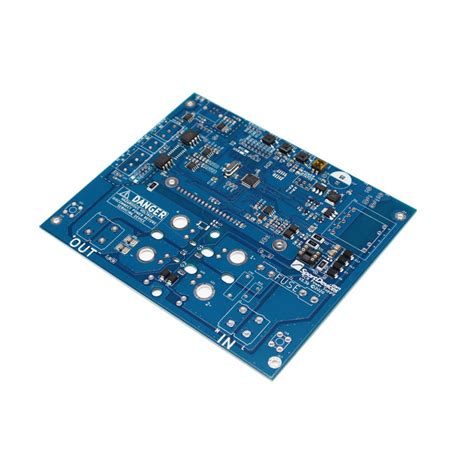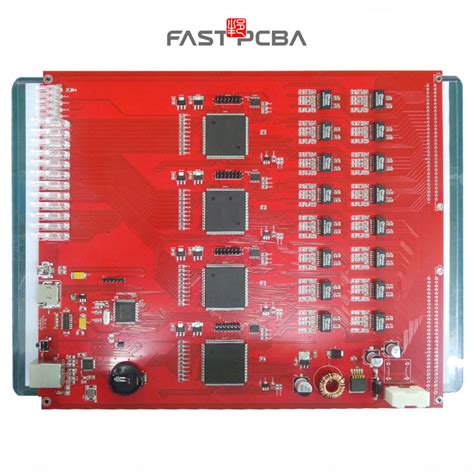Exploring Advanced Circuits: The Barebones Approach to Innovation
Key Takeaways
When exploring the concept of barebones in circuit design, it’s essential to understand how simplifying components can lead to significant advantages in the realm of advanced circuits. By stripping away non-essential elements, you can focus on enhancing the core functionality and efficiency of your designs. This minimalist approach not only reduces pcb manufacturing cost but also allows for an agile response to evolving technology demands, which is crucial when working with pcb manufacturing companies that aim to produce high-quality products efficiently. You may find that the integration of advanced materials and innovative techniques in your designs can minimize production time while maintaining robustness, thus enabling you to remain competitive within the pcb manufacturing business landscape. Identifying and employing key design principles aligned with minimalism can lead to a clearer understanding of how each element contributes to overall performance. As you explore this methodology, consider how challenges unique to minimalist designs, such as potential limitations in functionality or manufacturability, might be addressed through clever engineering and strategic partnerships with industry leaders.
Exploring the Concept of Barebones in Circuit Design
In the realm of electronics, the idea of adopting a barebones approach in circuit design revolves around simplifying components to create more efficient and functional systems. By focusing on the essential elements required for operation, you can significantly reduce complexity. This minimalist philosophy not only influences pcb manufacturing but also shapes the methodologies utilized by pcb manufacturing companies. When you prioritize a streamlined design, you’ll find that pcb manufacturing costs can also decrease, allowing for more economic allocation of resources within your pcb manufacturing business. The barebones model encourages you to think critically about each component’s purpose and contribution to overall performance. As you eliminate excess, what remains is a circuit that showcases elegance and effectiveness, reinforcing the notion that less can indeed lead to more in advanced technological applications. Embracing minimalism may ultimately transform your approach to designing circuits, leading to enhanced functionality that resonates well in today’s fast-paced electronics landscape.
The Benefits of Minimalism in Advanced Circuits
Adopting a minimalist approach in advanced circuits offers several significant benefits that can enhance both functionality and efficiency. One of the primary advantages is the reduction in complexity, which leads to simpler designs. This simplicity not only makes the pcb manufacturing process more straightforward but also decreases the pcb manufacturing cost by minimizing the number of components required. By focusing on essential elements, you allow for optimized layouts that improve signal integrity and reduce interference.
Moreover, when working with pcb manufacturing companies, the streamlined design translates into shorter turnaround times and potential cost savings. The elimination of unnecessary features enables engineers to concentrate on core functions, which can enhance the overall performance of the circuits. Additionally, minimalist designs often lead to lighter and more compact products, making them ideal for modern electronic devices that demand portability without compromising on capability.
In a table summarizing key benefits, you may find:
| Benefit | Description |
|---|---|
| Reduced Complexity | Simplifies design and production processes |
| Cost Efficiency | Lowers pcb manufacturing cost through fewer materials |
| Improved Performance | Enhances functionality by focusing on essential elements |
| Compact Design | Creates lighter devices for portability |
In conclusion, integrating minimalism into your circuit design not only streamlines the fabrication process but also aligns with current trends in electronics aimed at efficiency and user-friendliness. Embracing this philosophy can transform your approach to modern electronic challenges, fostering innovative solutions within your pcb manufacturing business.
Key Design Principles for Efficiency and Functionality
To achieve optimal efficiency and functionality in advanced circuits, you should consider several key design principles. First, adopting a barebones design approach can significantly reduce complexity. By stripping away non-essential components, you can streamline the circuit layout, thereby minimizing the potential for errors and improving reliability. This minimalistic methodology directly influences pcb manufacturing, as fewer components often result in decreased pcb manufacturing costs and simpler assembly processes.
Moreover, focusing on integration can enhance overall performance. By utilizing multi-functional components, you can reduce the number of discrete parts required in your circuit design. This is particularly advantageous when working with pcb manufacturing companies, as it not only speeds up the production timeline but also maximizes space efficiency on the board itself. Additionally, embracing innovative materials can lead to lighter and more robust circuits that are capable of handling higher frequencies with reduced losses.
Don’t overlook the importance of thermal management either. Effective heat dissipation strategies are critical to maintaining the longevity and functionality of your circuit designs. Incorporating these principles into your projects ensures that you are not only optimizing for current needs but also paving the way for future innovation.
By applying these fundamental design principles, your approach to advanced circuits will be rooted in both efficiency and functionality, setting a strong foundation for success in an increasingly complex electronic landscape where pcb manufacturing businesses thrive on innovation and performance-driven designs.
Case Studies: Successful Implementations of Barebones Circuits
Across various industries, the successful implementation of barebones circuits has demonstrated significant advantages in both performance and cost-effectiveness. For example, in the realm of consumer electronics, pcb manufacturing firms have adopted minimalistic design principles to create devices that are not only lightweight but also highly efficient. By focusing on essential components and reducing unnecessary features, these companies have seen a notable decrease in pcb manufacturing costs, resulting in more affordable products for consumers. Additionally, the focus on streamlined designs allows for quicker production cycles and enhanced reliability.
“Emphasizing simplicity can often lead to groundbreaking innovations that challenge the status quo.”
This philosophy holds true for many pcb manufacturing companies that have successfully integrated barebones designs into their product lines. By prioritizing functionality, they have been able to achieve a balance between performance and minimalism that resonates well with modern consumer demands. Moreover, as businesses look to scale operations or introduce new technologies, adopting a barebones approach can alleviate common production challenges while promoting sustainability within the pcb manufacturing business landscape. Such case studies serve as powerful examples of how innovative circuit design principles can lead to improved outcomes and efficiency in today’s fast-paced electronic market.
Challenges and Solutions in Minimalist Circuit Design
In the realm of minimalist circuit design, you will encounter a variety of challenges that require careful navigation. One prominent issue is the balance between simplicity and functionality. While reducing components can streamline circuits and potentially lower pcb manufacturing costs, it may also limit the circuit’s capabilities if not managed effectively. Efficiency must remain a priority, as advanced circuits are often judged by their performance in real-world applications. Working with leading pcb manufacturing companies provides the advantage of access to state-of-the-art technology that can facilitate innovative solutions to these challenges.
Another significant challenge is ensuring reliability in designs that favor minimalism. You might find that fewer components could lead to increased vulnerability to failure, prompting a need for rigorous testing and quality assurance processes during the pcb manufacturing business phase. Collaborating with experienced professionals in this field can yield insights into best practices for developing robust designs without unnecessary complexity.
Moreover, as you progress through the design process, integrating new technologies can help overcome these hurdles. For instance, adopting advanced materials or incorporating smart functionalities can enhance both resilience and efficiency in minimalist designs. Ultimately, by focusing on addressing these challenges with innovative solutions, you enable your designs to meet modern demands while embracing the core philosophy of minimalism in advanced circuit design.
Future Trends in Advanced Circuit Innovations
As you explore the future trends in advanced circuit innovations, the significance of barebones design becomes increasingly evident. The shift towards minimalism is not just a design choice; it reflects a response to the demands of modern electronics, where efficiency and functionality are paramount. In this evolving landscape, pcb manufacturing techniques are adapting, enabling pcb manufacturing companies to produce more compact and effective circuit boards that embody this minimalist philosophy. The focus on reducing unnecessary components leads to a decrease in pcb manufacturing costs, making advanced circuits more accessible and enabling broader application across various industries. This transformation opens doors to new opportunities within the pcb manufacturing business, as businesses strive to optimize their operations by incorporating advanced circuits that align with principles of simplicity and performance. As a result, you may witness an accelerated pace of innovation, as designers leverage these minimalist techniques to create cutting-edge solutions that meet the complex demands of today’s technology-driven world.
Comparative Analysis: Barebones vs. Traditional Circuit Designs
When exploring the landscape of circuit design, the dichotomy between barebones and traditional approaches becomes increasingly significant, especially in the context of modern pcb manufacturing. Traditional circuit designs often rely on multiple components that contribute to their functionality, leading to increased complexity and potentially higher pcb manufacturing costs. In contrast, a barebones approach emphasizes simplicity, stripping down circuits to their essential components. This not only reduces material requirements but also streamlines the pcb manufacturing business, making it easier for pcb manufacturing companies to innovate while maintaining cost-effectiveness.
By focusing on essential elements, you can enhance functionality; fewer components mean fewer points of failure and improved reliability in electronic devices. Additionally, minimalism fosters creativity within engineering teams as they learn to work with constraints, ultimately leading to unique solutions that challenge conventional thinking. The barebones design philosophy is not merely a reductionist approach; it serves as a catalyst for optimizing performance while minimizing waste—principles that are increasingly essential in today’s technology-driven world. When weighing the merits of these two methodologies, it’s important to consider how your choice impacts not only the design process but also broader implications for efficiency and sustainability in electronics development.
The Role of Technology in Facilitating Advanced Circuits
In your journey into the world of advanced circuits, you will find that technology plays a pivotal role in facilitating their development and functionality. The integration of sophisticated software and tools allows for the intricate designs needed in pcb manufacturing. By utilizing innovative techniques, pcb manufacturing companies are now able to produce more efficient and streamlined circuit designs, reflecting the core principles of minimalism. As you explore this landscape, understanding the pcb manufacturing cost becomes essential; it varies based on complexity, technology used, and production volume. This knowledge empowers you to make informed decisions when partnering with pcb manufacturing companies or contemplating a pcb manufacturing business, ultimately leading to enhanced performance in your electronic devices. Moreover, advancements in automation and digital technologies are transforming how circuits are prototyped and tested, vastly improving turnaround times while reducing error rates. By embracing these technological resources, you can ensure that your designs not only meet current industry standards but also push the boundaries of what is possible within the realm of advanced circuits.
Conclusion
In your exploration of advanced circuits and the barebones approach, it’s imperative to recognize the impact that your choices in pcb manufacturing can have on the overall design and performance of your electronic projects. By embracing a minimalist philosophy, you stand to significantly reduce the pcb manufacturing cost, thus making room for innovation within your pcb manufacturing business. Collaborating with reputable pcb manufacturing companies can enhance your ability to implement these designs effectively, taking advantage of their expertise in optimizing functionality without unnecessary complexity. As you move forward, consider how a streamlined approach not only elevates the performance of your circuits but also aligns with emerging trends in the electronics industry. The balance between simplicity and efficiency may very well define the future landscape of circuit design, providing you with powerful tools for achieving remarkable advancements in technology.
FAQs
What is a barebones approach in circuit design?
A barebones approach in circuit design refers to the principles of minimalism where only the essential components are used to create effective and efficient circuits. This technique can streamline the design process, resulting in advanced circuits that meet specific functional requirements without unnecessary complexity.
How can I benefit from using a barebones approach?
By adopting a barebones approach, you can achieve enhanced functionality and efficiency in your electronic projects. This method helps reduce pcb manufacturing costs and simplifies the overall process, enabling quicker prototype development while maintaining high-quality production standards.
What are the implications for pcb manufacturing companies?
For pcb manufacturing companies, utilizing the barebones design philosophy can lead to significant improvements in production efficiency. By focusing on essential components, manufacturers can reduce waste and optimize resources, ultimately benefiting their pcb manufacturing business.
Are there challenges associated with minimalist circuit design?
Yes, while the barebones approach offers numerous benefits, it does present challenges such as maintaining performance while reducing complexity. It may require careful consideration of component choices and proper planning to address issues that arise during pcb manufacturing.
How does technology impact advanced circuits?
Technology has an immensely positive impact on advanced circuits by enabling higher precision in pcb manufacturing, allowing for more compact designs without sacrificing functionality. Technological advancements also facilitate innovative solutions that meet the evolving demands of modern electronics.






